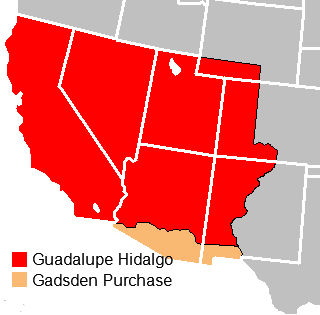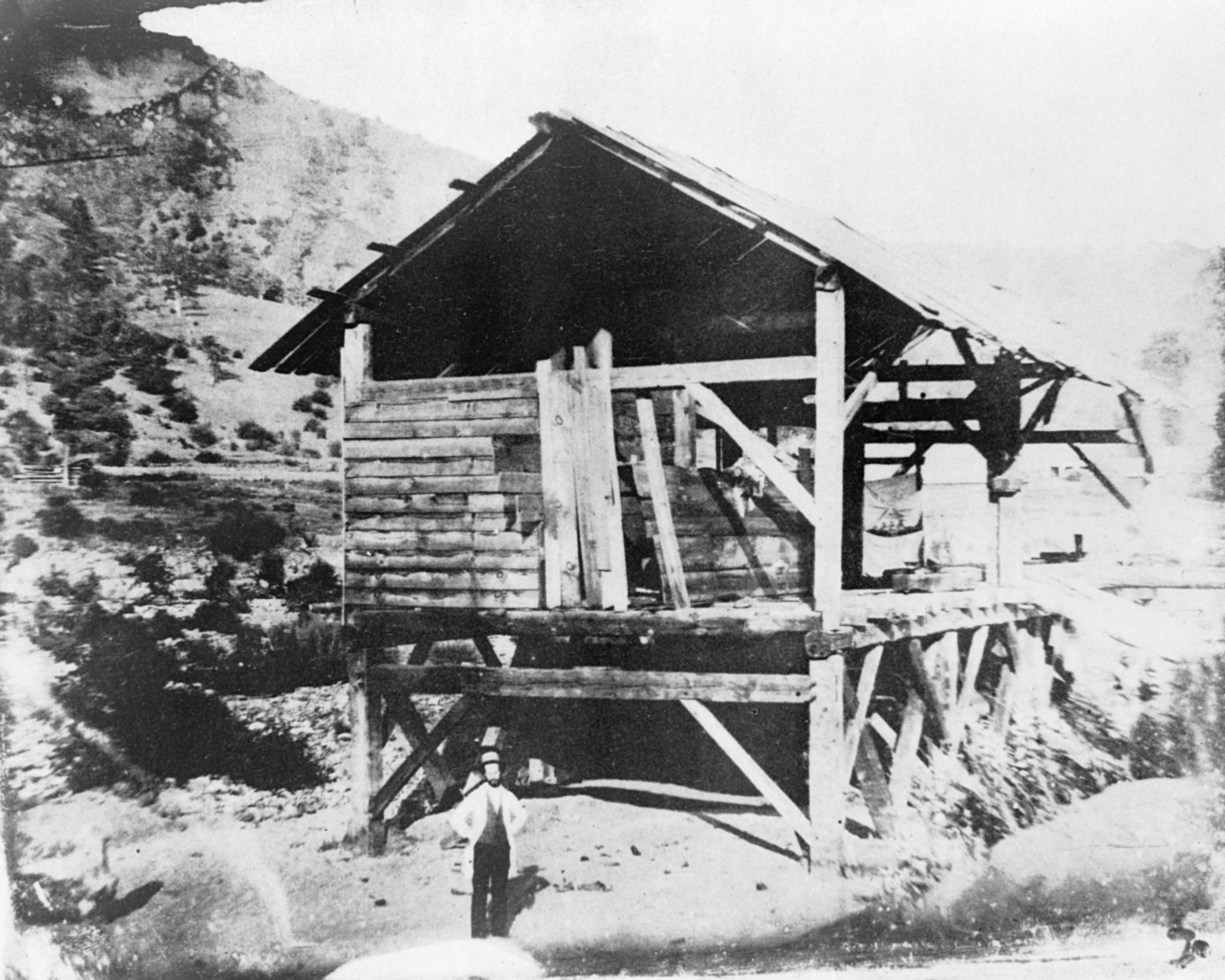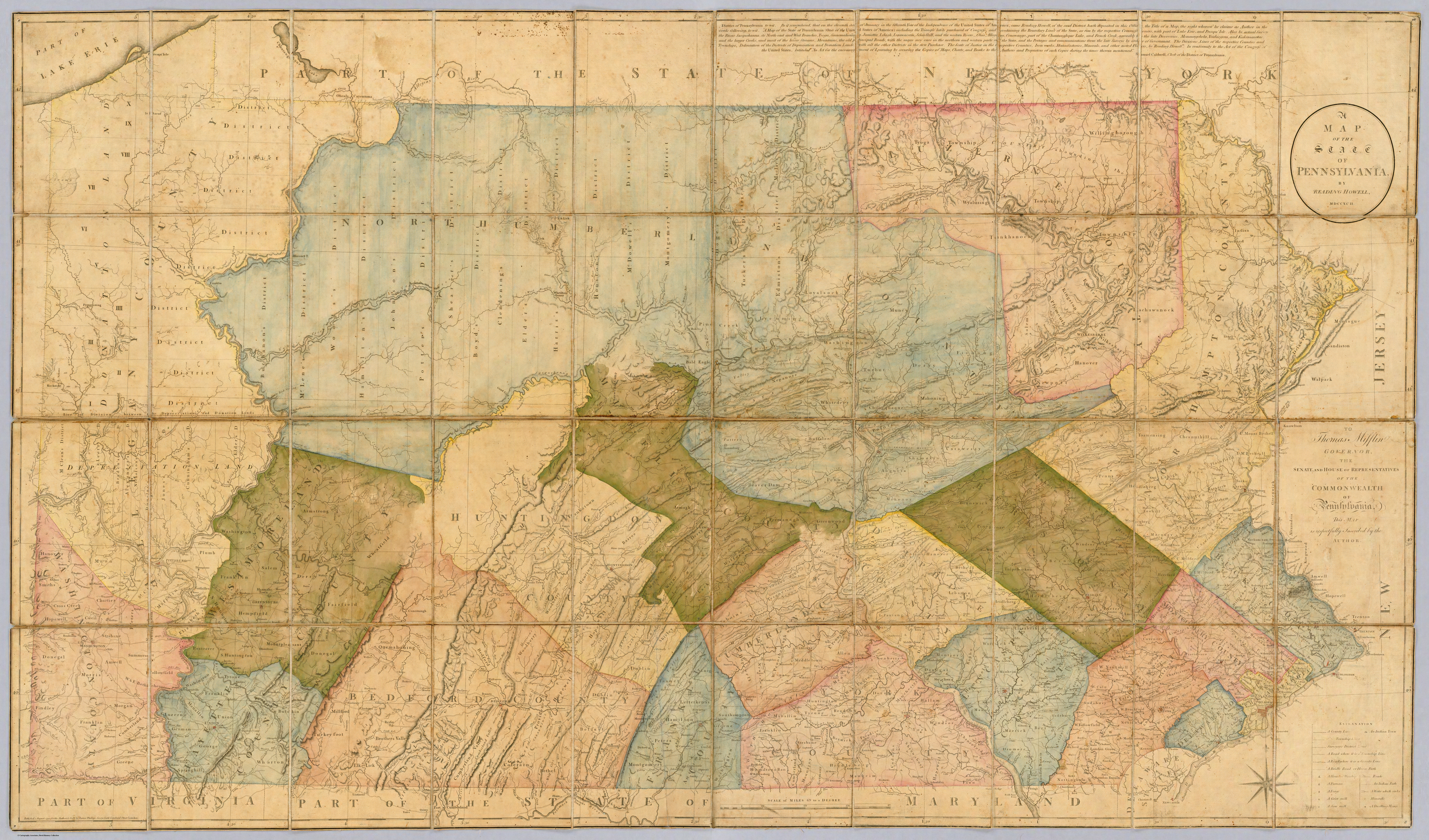|
David Wilmot
David Wilmot (January 20, 1814 – March 16, 1868) was an American politician and judge. He served as Representative and a Senator for Pennsylvania and as a judge of the Court of Claims. He is best known for being the prime sponsor and eponym of the Wilmot Proviso, a failed proposal to ban the expansion of slavery to western lands gained in the Mexican Cession. A notable member of the anti-slavery Free Soil Party, Wilmot later was instrumental in establishing the Republican Party in Pennsylvania. Education and career Born on January 20, 1814, in Bethany, Pennsylvania, Wilmot completed preparatory studies at the local Beech Woods Academy and at the Cayuga Lake Academy at Aurora, Cayuga County, New York, then read law with Pennsylvania state judge William Jessup in Montrose, Pennsylvania and with George Washington Woodward in Wilkes-Barre, Pennsylvania in August 1834. He was admitted to the bar of Bradford County, Pennsylvania and entered private practice in Towanda, B ... [...More Info...] [...Related Items...] OR: [Wikipedia] [Google] [Baidu] |
United States Court Of Claims
The Court of Claims was a federal court that heard claims against the United States government. It was established in 1855, renamed in 1948 to the United States Court of Claims (), and abolished in 1982. Then, its jurisdiction was assumed by the newly created United States Court of Appeals for the Federal Circuit and United States Claims Court (), which was later renamed the Court of Federal Claims. Before the Court of Claims was established, monetary claims against the federal government were normally submitted through petitions to Congress. By the time of the Court's creation, the workload had become unwieldy so Congress gave the Court jurisdiction to hear all monetary claims based upon a law, a regulation, or a federal government contract. The Court was required to report its findings to Congress and to prepare bills for payments to claimants whose petitions were approved by the Court. Since only Congress was constitutionally empowered to make appropriations, Congress still h ... [...More Info...] [...Related Items...] OR: [Wikipedia] [Google] [Baidu] |
Wilmot Proviso
The Wilmot Proviso was an unsuccessful 1846 proposal in the United States Congress to ban slavery in territory acquired from Mexico in the Mexican–American War. The conflict over the Wilmot Proviso was one of the major events leading to the American Civil War. Congressman David Wilmot of Pennsylvania first introduced the proviso in the House of Representatives on August 8, 1846, as a rider on a $2,000,000 appropriations bill intended for the final negotiations to resolve the Mexican–American War (this was only three months into the two-year war). It passed the House but failed in the Senate, where the South had greater representation. It was reintroduced in February 1847 and again passed the House and failed in the Senate. In 1848, an attempt to make it part of the Treaty of Guadalupe Hidalgo also failed. Sectional political disputes over slavery in the Southwest continued until the Compromise of 1850. Background After an earlier attempt to acquire Texas by treaty had f ... [...More Info...] [...Related Items...] OR: [Wikipedia] [Google] [Baidu] |
30th United States Congress
The 30th United States Congress was a meeting of the legislative branch of the United States federal government, consisting of the United States Senate and the United States House of Representatives. It met in Washington, D.C. from March 4, 1847, to March 4, 1849, during the last two years of the administration of President James K. Polk. The apportionment of seats in the House of Representatives was based on the Sixth Census of the United States in 1840. The Senate had a Democratic majority, and the House had a Whig majority. It was the only Congress in which Abraham Lincoln served. Major events * July 1, 1847: United States issued its first postage stamps * January 24, 1848: Gold found at Sutter's Mill, beginning the California Gold Rush * January 31, 1848: Washington Monument established * February 23, 1848: Former President John Quincy Adams, now a Congressman representing Massachusetts, dies in the Speaker's office after suffering a stroke in the House Chambers. * ... [...More Info...] [...Related Items...] OR: [Wikipedia] [Google] [Baidu] |
29th United States Congress
The 29th United States Congress was a meeting of the legislative branch of the United States federal government, consisting of the United States Senate and the United States House of Representatives. It met in Washington, D.C. from March 4, 1845, to March 4, 1847, during the first two years of James Polk's presidency. The apportionment of seats in the House of Representatives was based on the Sixth Census of the United States in 1840. Both chambers had a Democratic majority. Major events * March 4, 1845: James K. Polk became President of the United States * October 10, 1845: The Naval School (later renamed the United States Naval Academy) opened in Annapolis, Maryland * December 2, 1845: President Polk announced to Congress that the Monroe Doctrine should be strictly enforced and that the United States should aggressively expand into the West. * April 25, 1846: Open conflict over border disputes of Texas's boundaries began the Mexican–American War Major legislation * May ... [...More Info...] [...Related Items...] OR: [Wikipedia] [Google] [Baidu] |
United States House Of Representatives
The United States House of Representatives, often referred to as the House of Representatives, the U.S. House, or simply the House, is the lower chamber of the United States Congress, with the Senate being the upper chamber. Together they comprise the national bicameral legislature of the United States. The House's composition was established by Article One of the United States Constitution. The House is composed of representatives who, pursuant to the Uniform Congressional District Act, sit in single member congressional districts allocated to each state on a basis of population as measured by the United States Census, with each district having one representative, provided that each state is entitled to at least one. Since its inception in 1789, all representatives have been directly elected, although universal suffrage did not come to effect until after the passage of the 19th Amendment and the Civil Rights Movement. Since 1913, the number of voting representative ... [...More Info...] [...Related Items...] OR: [Wikipedia] [Google] [Baidu] |
Bradford County, Pennsylvania
Bradford County is a county in the Commonwealth of Pennsylvania. It is part of Northeastern Pennsylvania. As of the 2020 census, its population was 59,967. Its county seat is Towanda. The county was created on February 21, 1810, from parts of Lycoming and Luzerne Counties. Originally called Ontario County, it was reorganized and separated from Lycoming County on October 13, 1812, and renamed Bradford County for William Bradford, who had been a chief justice of the Pennsylvania Supreme Court and United States Attorney General. Bradford County comprises the Sayre, Pennsylvania micropolitan statistical area. The county is not to be confused with the city of Bradford, which is in McKean County, 141 miles to the west via U.S. Route 6. History As noted above, Bradford County was originally named Ontario County. The county was reorganized and renamed in 1812, but a section of north Philadelphia in which major east–west streets are named after Pennsylvania counties retai ... [...More Info...] [...Related Items...] OR: [Wikipedia] [Google] [Baidu] |
Wilkes-Barre, Pennsylvania
Wilkes-Barre ( or ) is a city in the U.S. state of Pennsylvania and the county seat of Luzerne County. Located at the center of the Wyoming Valley in Northeastern Pennsylvania, it had a population of 44,328 in the 2020 census. It is the second-largest city, after Scranton, in the Scranton–Wilkes-Barre–Hazleton, PA Metropolitan Statistical Area, which had a population of 563,631 as of the 2010 census and is the fourth-largest metropolitan area in Pennsylvania after the Delaware Valley, Greater Pittsburgh, and the Lehigh Valley with an urban population of 401,884. Scranton/Wilkes-Barre is the cultural and economic center of a region called Northeastern Pennsylvania, which is home to over 1.3 million residents. Wilkes-Barre and the surrounding Wyoming Valley are framed by the Pocono Mountains to the east, the Endless Mountains to the north and west, and the Lehigh Valley to the south. The Susquehanna River flows through the center of the valley and defines the n ... [...More Info...] [...Related Items...] OR: [Wikipedia] [Google] [Baidu] |
George Washington Woodward
George Washington Woodward (March 26, 1809May 10, 1875) was a Democratic member of the U.S. House of Representatives from Pennsylvania. George W. Woodward was born in Bethany, Pennsylvania. He attended Geneva Seminary (now Hobart and William Smith Colleges) in Geneva, New York, and Wilkes-Barre Academy in Wilkes-Barre, Pennsylvania. He studied law, was admitted to the bar in 1830 and commenced practice in Wilkes-Barre. He was a delegate to the State constitutional convention in 1837. He served as president judge of the fourth judicial district from 1841 to 1851. He was an unsuccessful candidate for United States Senator in 1844. Woodward was nominated in 1845 by President James K. Polk as an associate justice of the Supreme Court of the United States but the United States Senate voted 20–29 not to confirm him. Woodward was an associate judge of the Supreme Court of Pennsylvania from 1852 to 1863 and chief justice from 1863 to 1867. He was an unsuccessful Democratic candida ... [...More Info...] [...Related Items...] OR: [Wikipedia] [Google] [Baidu] |
Montrose, Pennsylvania
Montrose is a borough in Susquehanna County, Pennsylvania, United States, south-southeast of Binghamton, New York and north by west of Scranton. The land is elevated approximately 1,400 feet (427 m) above sea level. It is the Susquehanna County seat. History Montrose was laid out in 1812 in an area of Pennsylvania historically associated with the Indigenous Susquehannock people. The first non-Indigenous settler in 1800 was a Revolutionary War officer, Captain Bartlett Hinds, who traveled from Long Island, NY with his stepson, Isaac Post. Upon seeing the area's natural beauty and potential, he returned to NY to bring his family to Pennsylvania. Among other settlers were the descendants of Sir Peter Warren, Knight Vice Admiral on England's Royal Fleet. Upon retirement, he was given the land by grateful American soldiers. The first courthouse was built a year later, and Montrose was incorporated as a borough from part of Bridgewater Township on March 29, 1824. Its name is a p ... [...More Info...] [...Related Items...] OR: [Wikipedia] [Google] [Baidu] |
William Jessup
William Jessup (June 21, 1797 – September 11, 1868) was a Pennsylvania judge and father of the missionary Henry Harris Jessup. A member of the Republican party, he is best known for being the chairman of the platform committee that crafted and reported the political platform adopted by the 1860 Republican National Convention and accepted by Abraham Lincoln, the party's nominee. Jessup, Pennsylvania is named in his honor. Biography William Jessup left his native home, Long Island, in early adulthood to study at Yale College, graduating in 1815. He moved in 1818 to Montrose, Pennsylvania, and made it his lifelong home. He read law with an established firm, and was admitted to the bar. He married and fathered two sons, Henry Harris and Samuel Jessup, born in 1832 and 1833. In 1838 Jessup became the presiding judge of the Eleventh Judicial District of Pennsylvania, in which capacity he rode circuit from 1838 until 1851. In 1858, Jessup was the Vice President of the Americ ... [...More Info...] [...Related Items...] OR: [Wikipedia] [Google] [Baidu] |
Read Law
Reading law was the method used in common law countries, particularly the United States, for people to prepare for and enter the legal profession before the advent of law schools. It consisted of an extended internship or apprenticeship under the tutelage or mentoring of an experienced lawyer. The practice largely died out in the early 20th century. A few U.S. states still permit people to become lawyers by reading law instead of attending law school, although the practice is rare. In this sense, "reading law" specifically refers to a means of entering the profession, although in England it is still customary to say that a university undergraduate is "reading" a course, which may be law or any other. __TOC__ History United States In colonial America, as in Britain in that day, law schools did not exist at all until Litchfield Law School was founded in 1773. Within a few years following the American Revolution, some universities such as the College of William and Mary and ... [...More Info...] [...Related Items...] OR: [Wikipedia] [Google] [Baidu] |
New York (state)
New York, officially the State of New York, is a state in the Northeastern United States. It is often called New York State to distinguish it from its largest city, New York City. With a total area of , New York is the 27th-largest U.S. state by area. With 20.2 million people, it is the fourth-most-populous state in the United States as of 2021, with approximately 44% living in New York City, including 25% of the state's population within Brooklyn and Queens, and another 15% on the remainder of Long Island, the most populous island in the United States. The state is bordered by New Jersey and Pennsylvania to the south, and Connecticut, Massachusetts, and Vermont to the east; it has a maritime border with Rhode Island, east of Long Island, as well as an international border with the Canadian provinces of Quebec to the north and Ontario to the northwest. New York City (NYC) is the most populous city in the United States, and around two-thirds of the state's popul ... [...More Info...] [...Related Items...] OR: [Wikipedia] [Google] [Baidu] |




